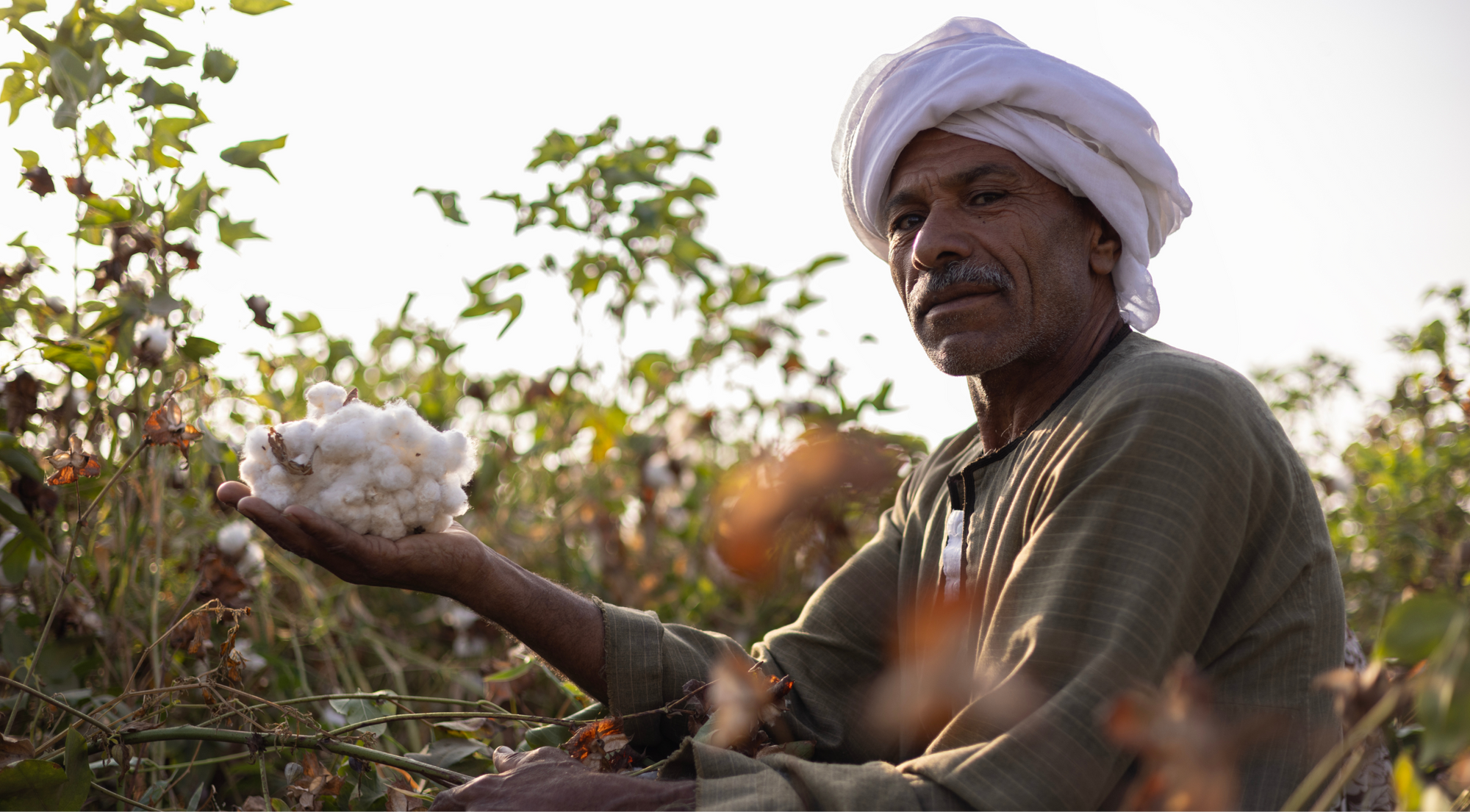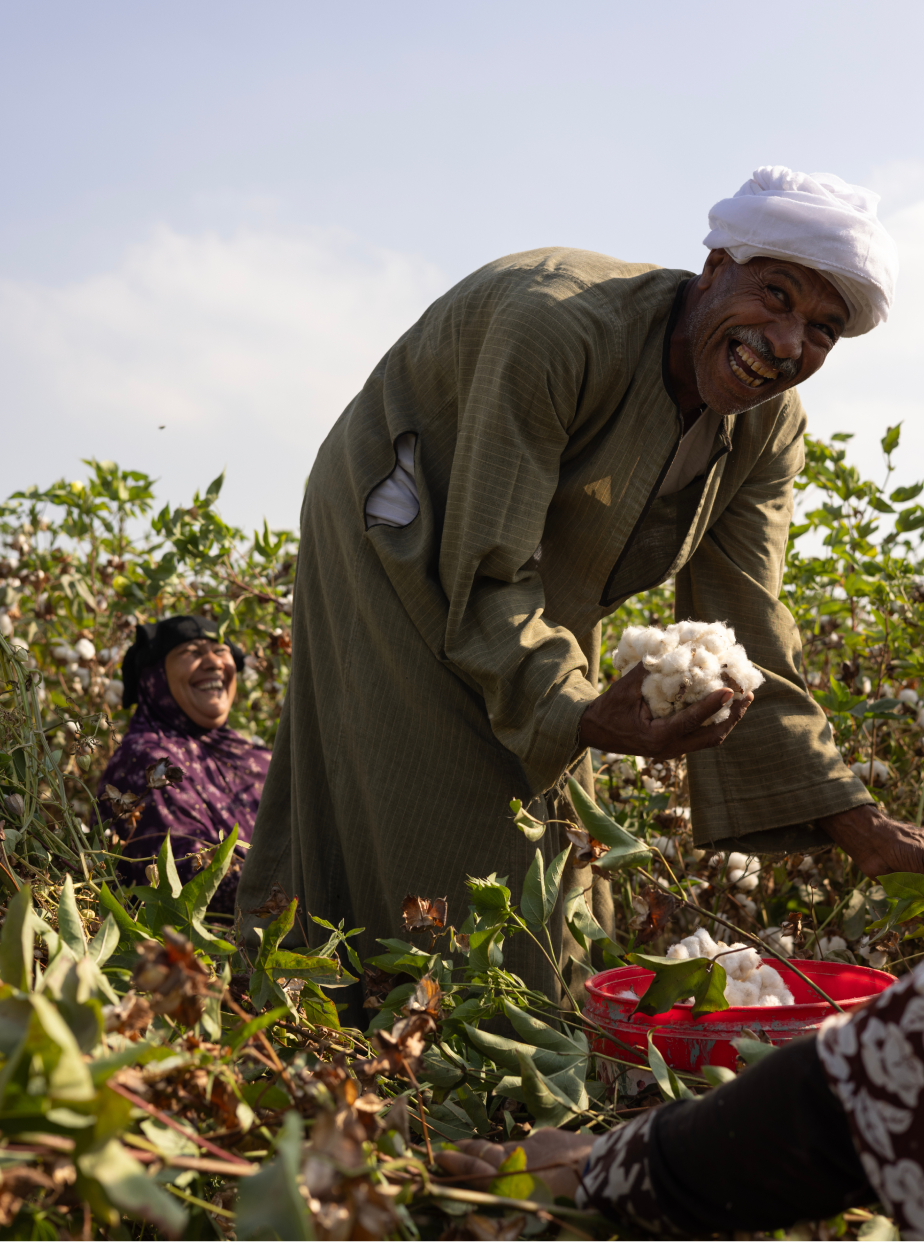Why Regenerative Egyptian Cotton?

For centuries, the Nile River served as a lifeline to countless generations. Every Fall, its waters would flood, dispersing a rich nutrient-laden silt that nourished the land and created some of the most fertile soils in the world. Agriculture thrived, and food and fiber were grown in biodynamic synchronicity with the vibrations of the Earth.
In the 1970’s the Aswan High Dam was erected putting control of the river into human hands. The Nile no longer rose, and farmers could no longer rely on its naturally-occurring nutrients to nourish their crops; trading 40 million tons of annually deposited silt for 1 million tons of artificial fertilizers per year.
While modern creations, such as damns, synthetic fertilizers and pesticides, have deteriorated ecosystems and taken away from the land, regenerative agriculture provides the opportunity to heal and revive these landscapes.

Nazeerah supports a new generation of regenerative cotton farmers in Egypt who are enhancing the biodiversity of the land by using only natural compost for fertilizer, neem oil extract to prevent plant disease, and non-invasive methods such as pheromones and beneficial insects, like ladybugs, to control pests. These methods are also 10x less costly for the farmers than synthetic additives.
Where organic farming helps to maintain soil health, regenerative farming takes the next step by enhancing biodiversity, restoring carbon to the soil, and repairing our world.